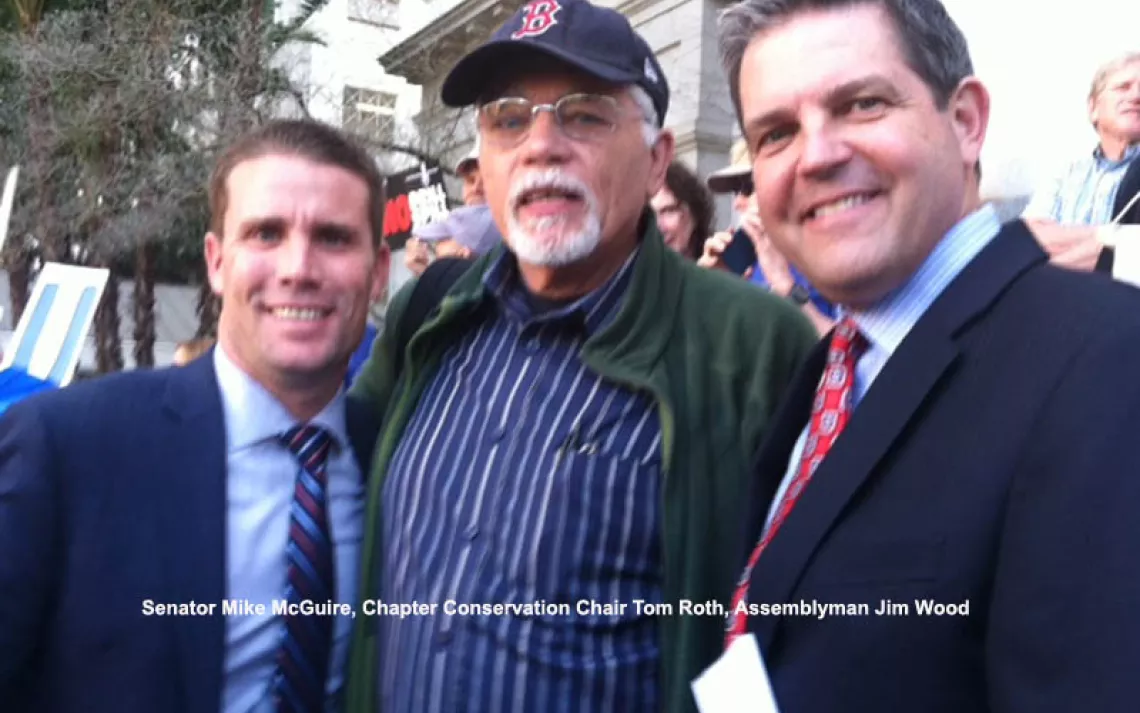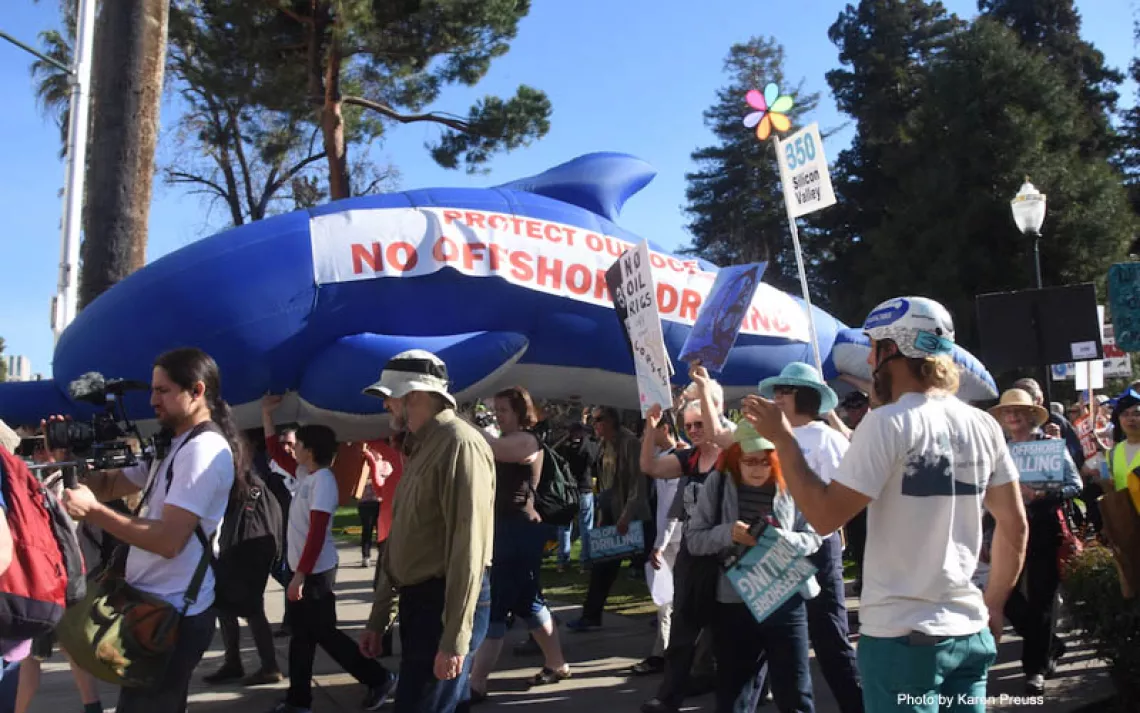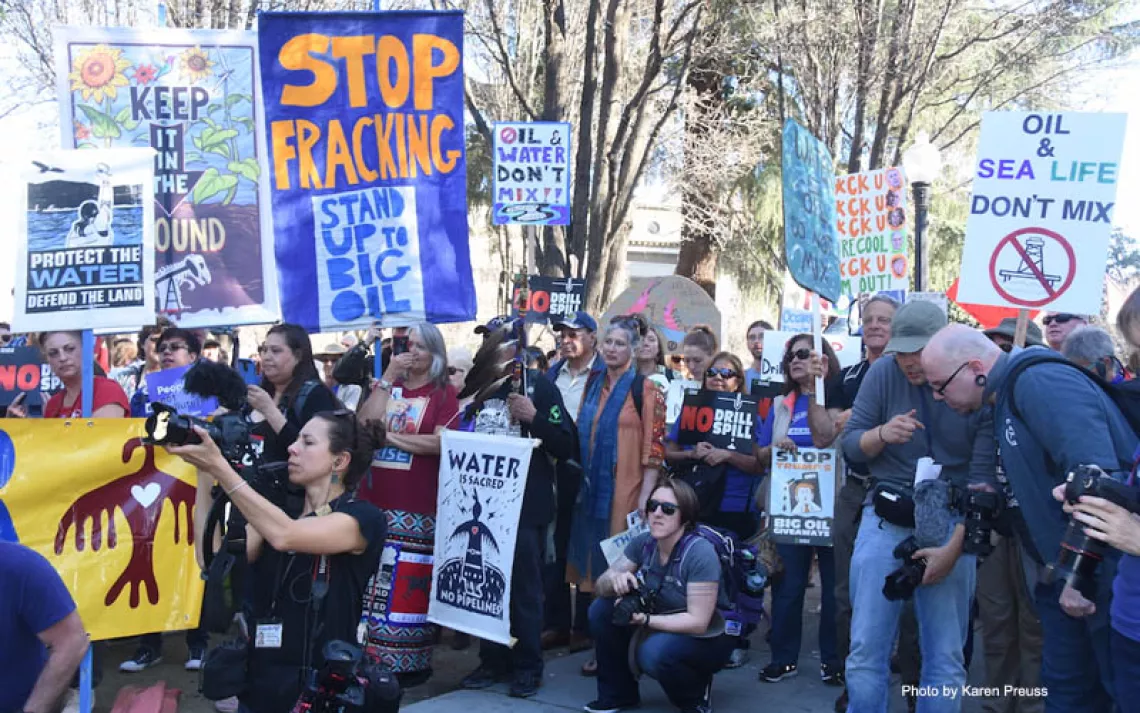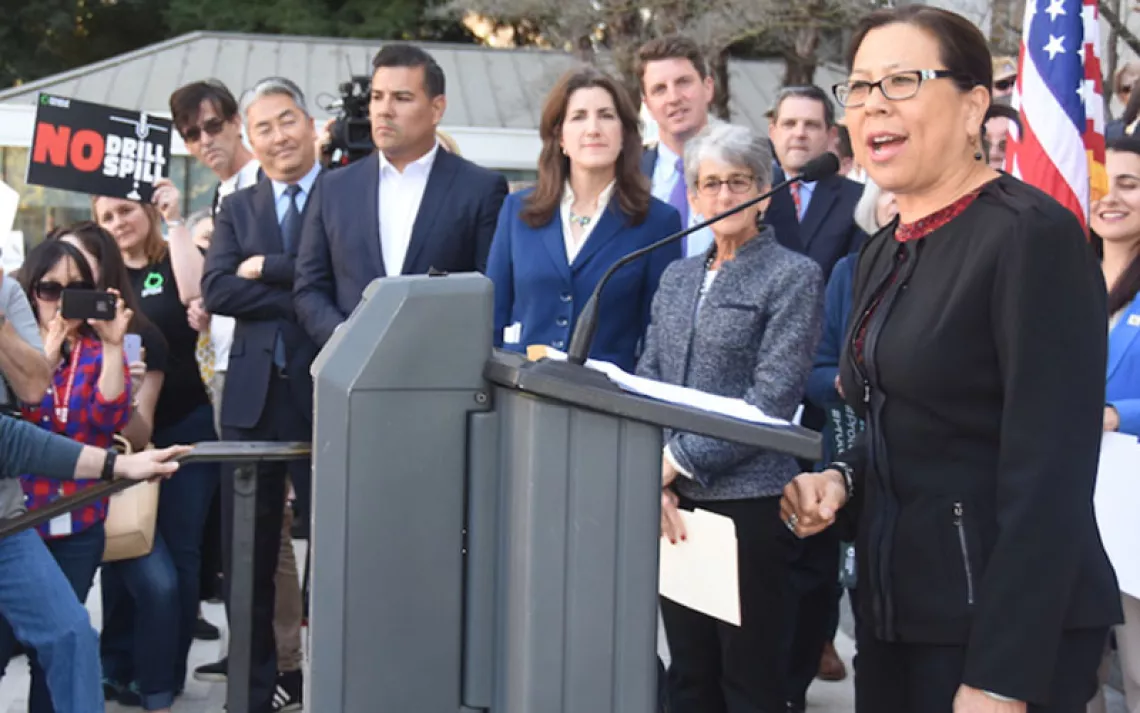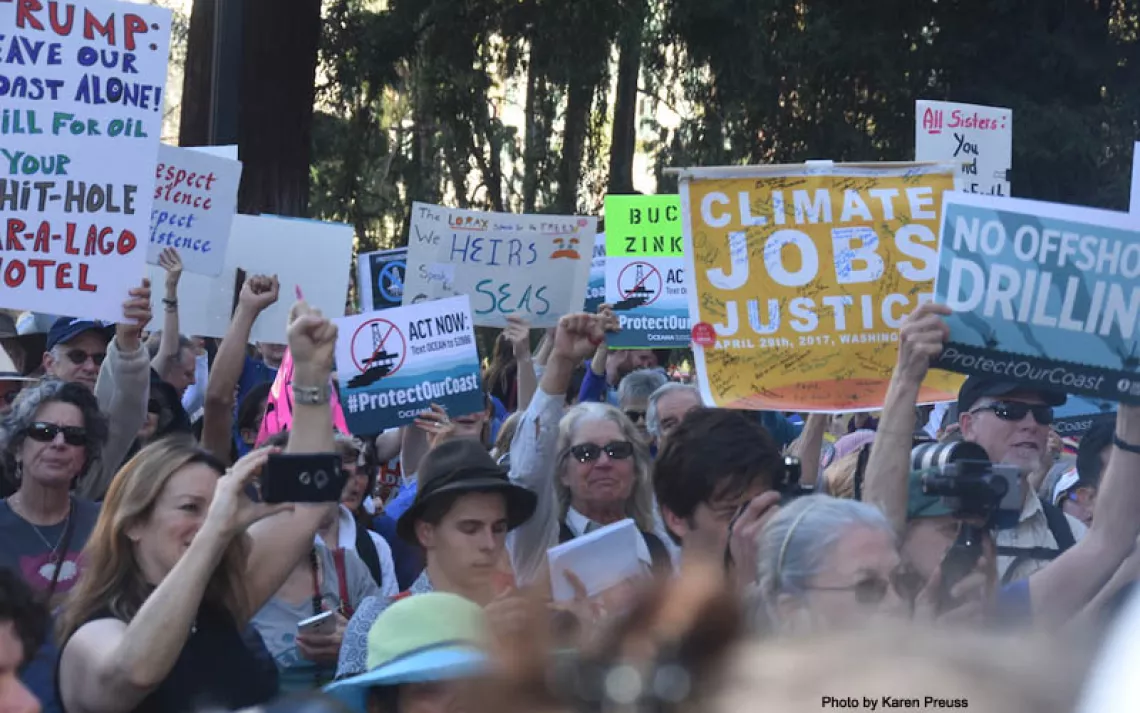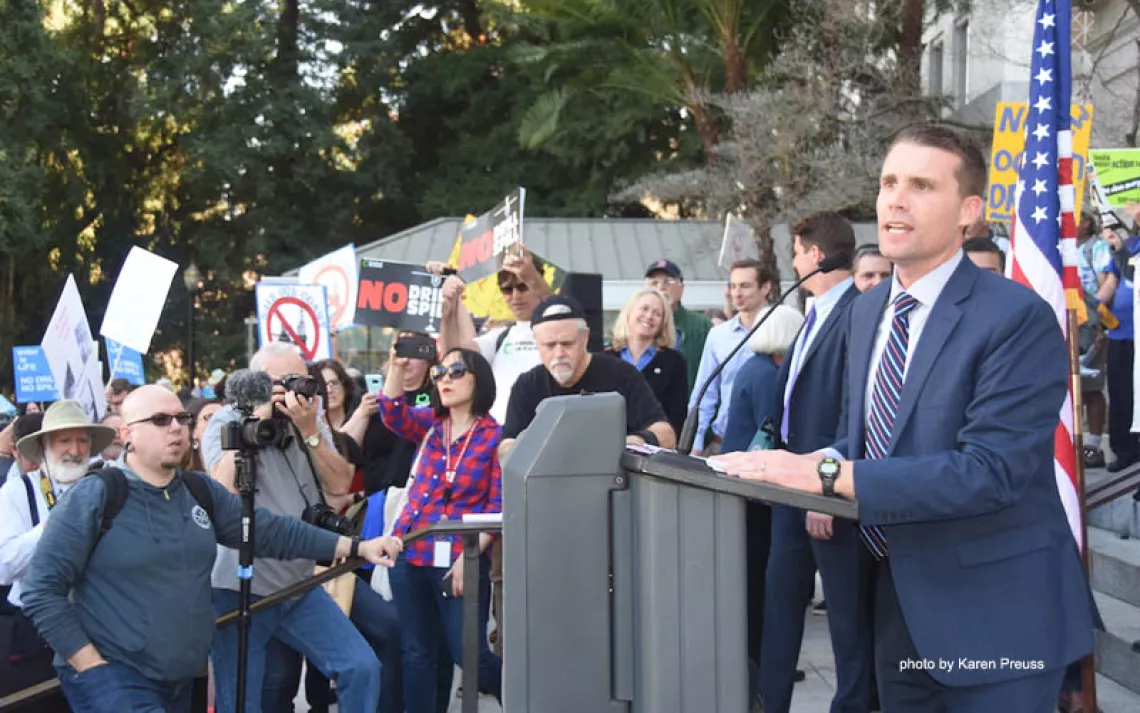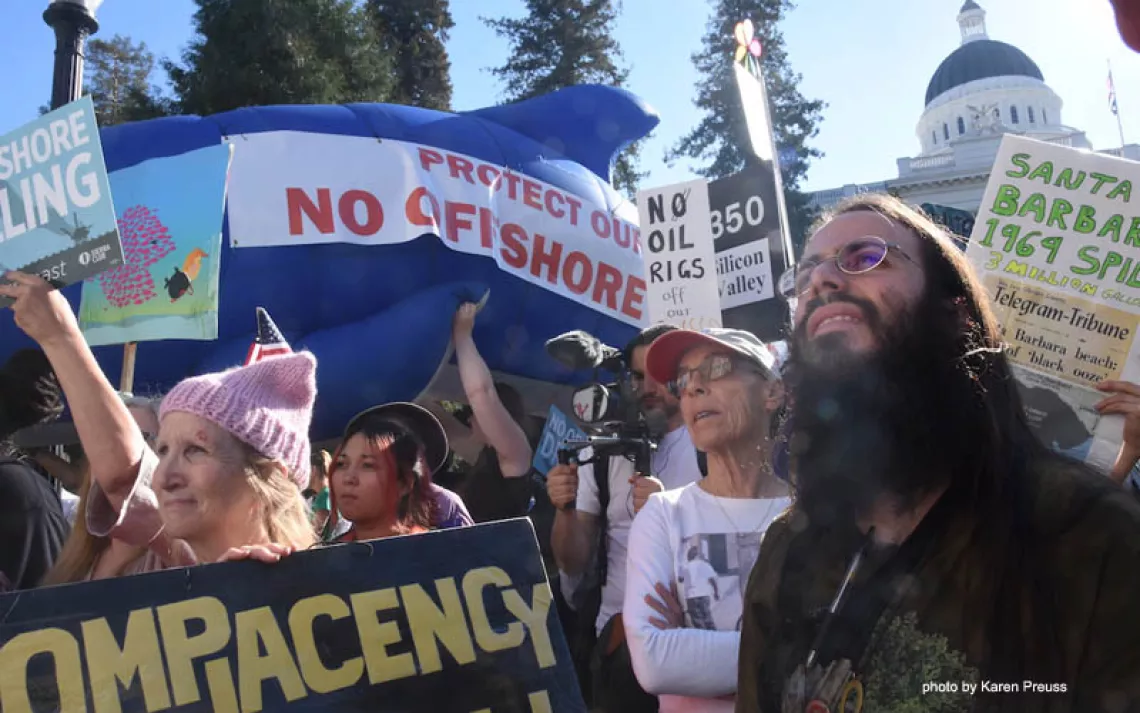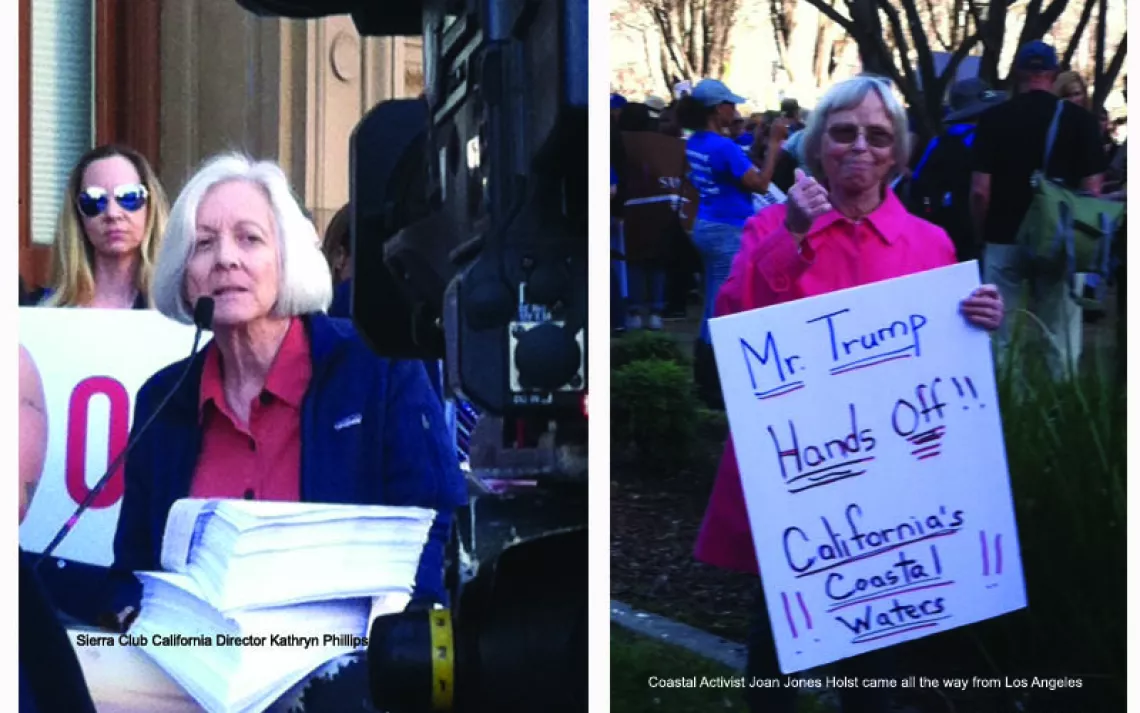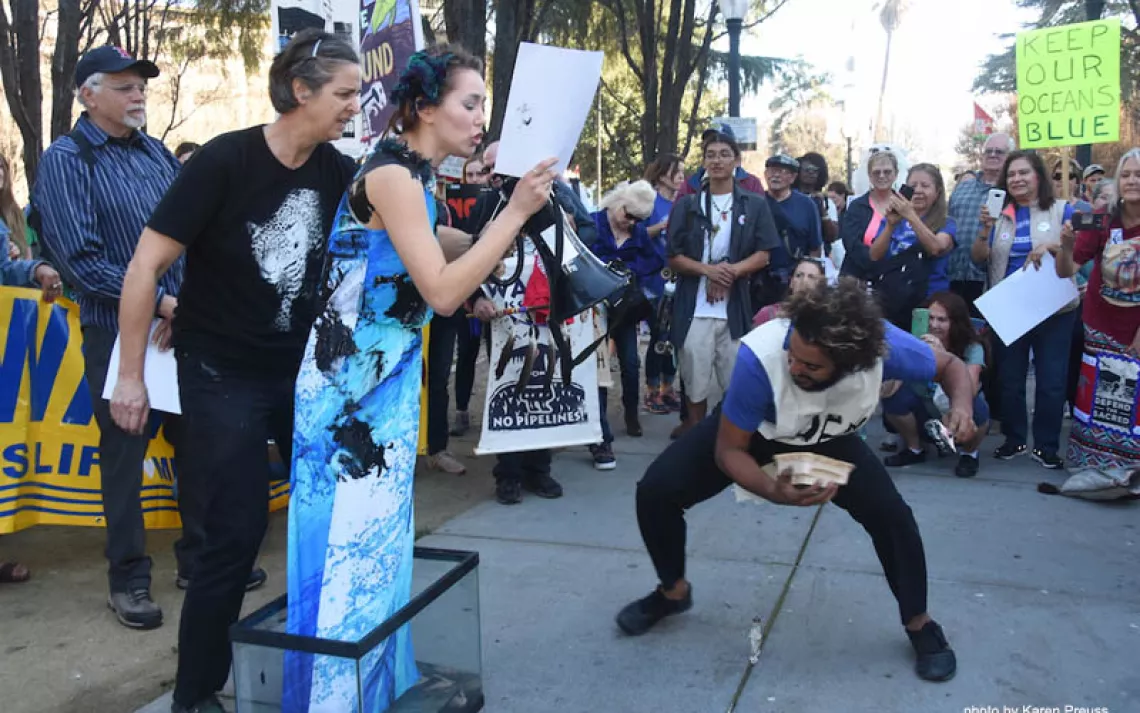By Tom Roth, Redwood Chapter Conservation Chair
Despite a Trump administration decision to hold the sole California public hearing on a plan to expand offshore oil drilling in Sacramento more than 100 miles from the nearest beach, hundreds of Californians, including a sturdy delegation from Redwood Chapter, descended on the state capital Feb. 8 to let their voices be heard.
They were joined in on the Capitol steps by a slew of state legislators, including North Coast representatives, state Sen. Mike McGuire and Assemblyman Jim Wood. Both McGuire and Wood loudly decried the plan, which would open up 47 lease sales along the nation’s coastline, including six off of California. Earlier in the day, the state Assembly overwhelmingly passed a resolution condemning the plan.
Cities and counties around the state, including many in our region, have also passed resolutions stating the various reasons why this is a bad idea, including the inevitability of a devastating oil spill that not only would harm the ecosystems but quash tourism and coastline recreation.
Sierra Club and the Center for Biological Diversity sponsored buses to bring people throughout the state, including many from Southern California, to Sacramento. Redwood Chapter organized a bus from Santa Rosa that transported about 50 enthusiastic demonstrators. The Redwood Chapter bus was lively and friendly. Riders and bus captains used the opportunity to network, make announcements and ask questions about the drilling plan. As the bus traversed the baylands, Redwood Chapter Transportation Chair Steve Birdlebough took the opportunity to discuss the future of Highway 37, which is ungoing a transformation to mitigate the effects of sea level rise.
Arriving in Sacramento, we joined in a spirited rally with Native American leaders who shared the stage with environmentalists, scientists and a diverse group of legislators, including lone Republican Catharine Baker from the East Bay.
The subsequent march to the meeting held by the Bureau of Ocean Energy Management (BOEM), featured hand-made and printed signs, people transporting giant whales and sea turtles and friendly (though concerned) polar bears and sharks, chanting and singing.
Inside the meeting at the library on “I” Street, participants were directed to several tables with posters and handouts about the “benefits” of offshore drilling, safety and the lease sale process. Visitors could also log in to computers where they could comment on the plan.
The BOEM meeting followed a bureaucratic playbook designed to control opposition, while meeting minimum requirements for public participation. There was no panel of experts and officials to hear the testimony of attendees. In fact, there was no agenda, no lectern, no microphones, and no opportunity at all for participants to address BOEM or the public. Several dozen participants outraged at the sham meeting gathered at one end of the room and began chanting, “Where is the meeting?”
Other California officials and commissions had earlier expressed opposition to new rigs off our coast. The State Lands Commission highlighted the economic impact of drilling on California’s $19.5 billion coastal economy, a segment that continues to grow twice as fast as other economic sectors. The California Coastal Commission, noting its mission to protect the coast, reminded BOEM of earlier spills and the devastation wrought on coastal ecosystems. State officials also decried how new drilling would sabotage the state’s efforts to lower greenhouse emissions, and would conflict with efforts to transition to clean energy.
Last year, a bill that would have prohibited the lease of California waters (or renewals of leases of California waters) for new pipelines, wharves or piers needed to transport offshore oil, died in the Assembly Appropriations Committee. Companion bills have been introduced this year in the state Senate (SB 834) and Assembly (AB 1775).
Comments on the offshore drilling plan will be accepted until March 9. More information and a link to the BOEM comment page can be found at SavetheCoast.org
